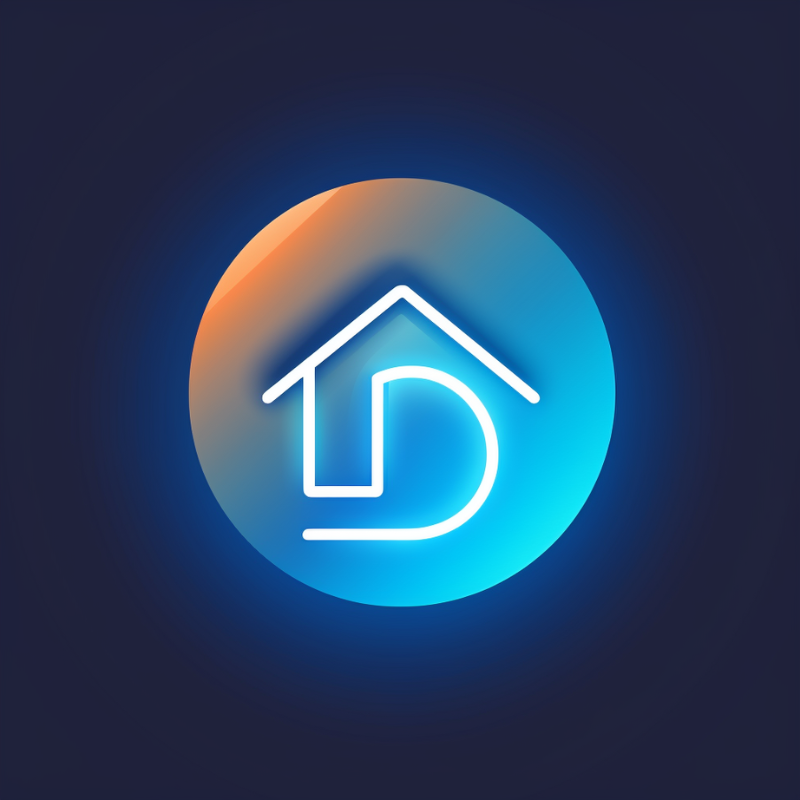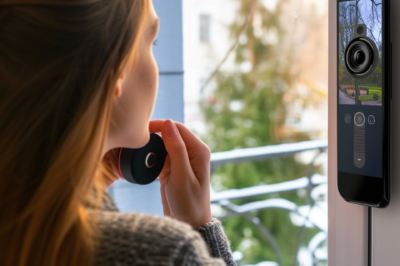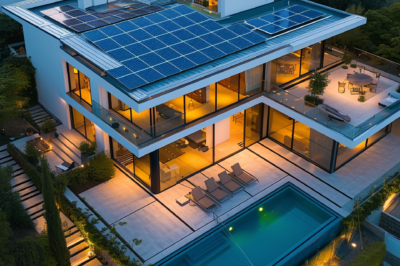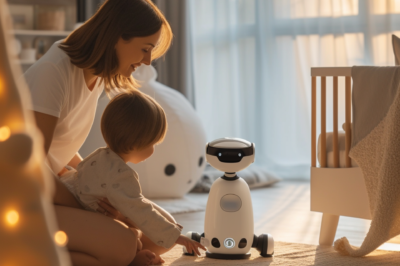In 2024, the landscape of home and health technology has seen substantial growth, mirroring consumers’ increasing desire for convenience, safety, and well-being. Smart home devices have evolved to offer more than just basic automation; they now intertwine with health gadgets to provide an ecosystem that not only simplifies household tasks but also aids in monitoring and improving health. This seamless merger of home and health tech aims to make daily life more efficient while keeping a close eye on the well-being of inhabitants.

With the advancements in technology, users can now control their home appliances, security systems, and energy consumption from anywhere in the world. Health-related gadgets have become sophisticated enough to track fitness, manage chronic conditions, and even support aging in place with heightened safety. Integration and interconnectivity among devices are key; the ability for different technologies to work together has become a major focus, driving the creation of more cohesive and responsive environments. As we head deeper into the decade, these smart technologies are becoming ingrained in the fabric of modern living, with innovation continuously pushing the boundaries of what is possible.
Why Go Smart?
- Smart technologies offer enhanced convenience, security, and health monitoring in modern homes.
- Devices are increasingly integrated, creating cohesive systems for comprehensive lifestyle management.
- Innovative home and health devices continue to evolve, becoming an integral part of daily life.
What are the top smart devices for enhancing home automation?
The leading devices that offer substantial enhancement in home automation include smart thermostats, advanced security systems, and intelligent lighting solutions—all of which can be controlled via smartphone apps and voice assistants like Alexa, Google Home, and Siri for convenience and energy efficiency.
Which companies are leading the smart home technology market?
Companies such as Google, Amazon, and Apple are at the forefront of the smart home technology market. They continuously innovate within their ecosystems, offering a range of products and services that work seamlessly together.
How is smart home technology being integrated into healthcare management?
Smart home technology in healthcare is being integrated through devices like remote health monitoring systems and emergency assistance devices, which facilitate the management of chronic conditions and support independent living for the elderly or infirm.
Smart Home Technologies

Smart home technologies have become integral to modern living, offering increased convenience, improved energy efficiency, and enhanced security. They empower homeowners with remote control and automation of various household functions.
Smart Home Hubs and Controllers
Smart home hubs and controllers serve as the central nervous system for connected home devices. They allow devices to communicate with each other and with the user via a smartphone app or voice commands. Popular hubs include devices like Amazon Echo and Google Nest, which provide centralized control and integrate with a wide array of smart home products.
Intelligent Lighting and Energy Management
Intelligent lighting systems offer both energy savings and convenience, with features like programmable schedules and remote access. Energy management extends beyond lighting, with smart thermostats such as Nest and Ecobee helping to optimize heating and cooling for cost and efficiency.
| Feature | Benefit |
| Dimming | Reduces energy consumption |
| Remote control | Adjusts lighting from anywhere |
| Custom scenes | Creates preset lighting configurations |
Security and Surveillance Systems
The security and surveillance sector has seen significant advancements with smart technology. Homeowners can now employ smart locks, doorbell cameras like Ring, and surveillance systems that offer live feeds on mobile devices. These systems often include motion detection, real-time alerts, and integration with other smart home devices for a more robust security posture.
- Smart locks can be controlled remotely, allowing for keyless entry and the ability to grant access to visitors without physical keys.
- Surveillance cameras facilitate real-time monitoring with high-definition video, some even featuring facial recognition capabilities.
Note: Always ensure you are using Smart Home Technologies in accordance with privacy laws and regulations.
Health and Wellness Devices

In the evolving landscape of smart technology for homes, health and wellness devices stand out for their ability to enhance daily well-being and medical care. These tools range from wearable monitors for fitness tracking to sophisticated systems for environmental health management.
Wearable Health Monitors
Wearable health monitors have become the cornerstone of personal wellness tech. Products like the Apple Watch and devices showcased at CES 2024 support a vast array of features from heart rate tracking to sleep analysis. These wearables are designed to be both accessible and user-friendly, offering real-time health metrics on the go.
- Apple Watch: Offers comprehensive health monitoring for less than $10/month.
Telehealth and Remote Monitoring
Telehealth and remote monitoring devices are increasingly important in managing health care needs. These technologies facilitate virtual consultations and continuous health metrics tracking, providing peace of mind and alerting users to potential health issues before they escalate.
- Remote Monitoring: Devices connect patients with healthcare providers, offering vital sign tracking and teleconsultations.
Environmental Health Devices
The integration of environmental health devices into smart homes marks a new era of holistic living. Advanced sensors and apps work in tandem to create optimal living conditions, improving air quality, and even assisting with the regulation of lighting based on time of day or personal preferences.
- Smart Sensors: Control home environments for better health, from air quality to lighting.
Devices like those from Withings and Garmin have expanded the scope of health monitoring, creating a seamless ecosystem that emphasizes preventive healthcare and empowers consumers to take charge of their wellness.
Integration and Interoperability

In the realm of smart home technology, integration and interoperability stand as foundational pillars. They enable seamless communication between devices, fostering a more efficient and user-friendly ecosystem.
The Matter standard, formerly Project CHIP (Connected Home over IP), is pivotal in advancing interoperability. Introduced in 2022, Matter is an open-source initiative backed by leading tech entities such as Amazon, Apple, and Google. It revolves around establishing a unified protocol, allowing devices from different manufacturers to communicate and work together effortlessly.
Integration in smart homes implies the ability of devices to function as part of a larger system. Rather than operating in isolation, integrated devices can trigger actions in one another, creating a coordinated, almost intuitive environment.
Factors influencing integration and interoperability:
- Protocols: Devices must share common protocols to communicate.
- Ecosystems: Interoperability is crucial for different ecosystems to coexist.
- Standards: Industry standards ensure consistency and compatibility.
| Factors | Importance |
| Protocols | Crucial for communication |
| Ecosystems | Enables diverse coexistence |
| Standards | Guarantees uniformity |
Due to these concerted efforts toward standardization, users can now expect a more connected and accessible smart home experience, enhancing health monitoring and home management with fewer barriers to device communication. The pathway set by Matter and the continued focus on these critical aspects signify an era where smart homes are inherently designed to be inclusive, adaptable, and universal in their operation.
Emerging Trends in Smart Technology
2024 witnesses a significant integration of smart technologies into homes, focusing on enhancing lifestyle, health, and environmental sustainability. Smart Home Connectivity advances, allowing devices to communicate seamlessly, creating a more intuitive and efficient living environment.
- Health Management: Personalized health tracking integrates into smart homes, providing real-time data and predictive insights into residents’ health, encouraging proactive wellness practices.
- Heating: Innovations in smart home heating offer adaptive temperature control for comfort while optimizing energy consumption.
- Entertainment: Next-generation home entertainment evolves through immersive experiences with advanced audiovisual technologies and interactive platforms.
Efforts toward Sustainable Homes gain momentum, featuring intelligent energy management systems that not only reduce costs but also align with eco-friendly practices.
- Solar energy storage
- Smart meters
- Energy-efficient appliances
Home Robotics and security are other pivotal areas; robotic assistants help with domestic tasks while enhanced security systems protect residents using features like smart locks and surveillance with AI-driven anomaly detection.
- Robotic vacuum cleaners
- Lawn maintenance bots
- AI facial recognition for security
In summary, the smart technology landscape in homes is increasingly characterized by a blend of convenience, efficiency, and personalized health and security solutions, all while aiming for a reduced environmental footprint.
Frequently Asked Questions
Smart home technology and health integration are rapidly advancing fields with much to explore and understand. Here, some of the most common inquiries are addressed to provide clarity on what’s current and what’s next.
Which smart home ecosystems offer the best user experience?
Current smart home ecosystems offering the best user experience include Amazon’s Alexa, Google’s Assistant, and Apple’s HomeKit. These ecosystems excel in user interface design, compatibility with a wide range of devices, and robust automation capabilities.
What advancements in smart home technology can we expect in the near future?
Future advancements in smart home technology likely involve the expansion of the Matter standard, facilitating device interoperability and enhanced AI capabilities for predictive automation and improved energy efficiency.
What are some innovative smart gadgets for home and kitchen use?
Innovative gadgets for home and kitchen include smart plugs like the Wemo Wi-Fi Smart Plug, smart coffee makers such as the Keurig K-Cafe Smart, and intelligent lighting systems including the Philips Hue Starter Kit. These devices offer convenience, customization, and control over the home environment.



